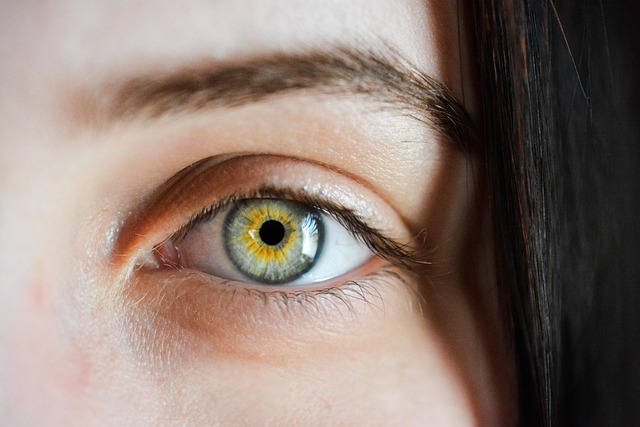Warts, caused by HPV, are common skin growths on hands and feet requiring distinct treatment based on type. Traditional methods like salicylic acid or cryotherapy may cause discomfort and scarring. Modern dermatology offers minimally invasive solutions like laser therapy and cryosurgery for effective wart removal with less damage to surrounding skin. At-home treatments using creams with salicylic acid or cantharidin are also available, but precise application and hygiene are crucial. Proactive strategies such as regular handwashing, nail trimming, avoiding contact with warts, and balanced nutrition help prevent recurrent warts on hands and feet.
Warts on the hands and feet can be unsightly and uncomfortable, affecting people of all ages. This comprehensive guide delves into effective wart removal strategies, addressing various types and causes. From traditional methods like salicylic acid and cryotherapy to modern techniques such as laser therapy, we explore safe and efficient treatments. Learn about at-home care, prevention tips, and when to seek professional help for persistent warts. Discover the best practices for achieving smooth, wart-free skin on your hands and feet.
- Understanding Warts: Causes and Types
- Traditional Wart Removal Methods for Hands and Feet
- Modern Approaches: Laser Therapy and Cryosurgery
- At-Home Treatment Options and Precautions
- Prevention Strategies for Recurrent Warts
Understanding Warts: Causes and Types
Warts are common skin growths that can appear on various parts of the body, but they often manifest on the hands and feet. Understanding their causes and types is essential when considering Wart removal for hands and feet at any age. These benign tumors are caused by the human papillomavirus (HPV), with different strains leading to distinct variations in appearance and symptoms.
There are several types of warts, including common warts, which are rough, small bumps typically found on the hands or feet; plantar warts, flat and hard growths that develop on the soles of the feet; and genital warts, a more serious form associated with sexual transmission. Each type requires specific consideration when it comes to removal methods, as some may be more resilient than others. Effective wart removal for hands and feet involves identifying the type and causing factor, followed by appropriate treatment options like topical medications, cryotherapy (freezing), or surgical excision.
Traditional Wart Removal Methods for Hands and Feet
Traditional methods for removing warts on hands and feet often involve harsh chemicals or physical destruction. Salicylic acid is a common active ingredient in over-the-counter treatments, which slowly dissolve the wart over several weeks. This method can be effective but may cause discomfort and skin irritation. Alternatively, doctors might perform procedures like cryotherapy, where liquid nitrogen freezes and destroys the wart, or use surgical scraping to physically remove it.
While these traditional approaches have been used for years, they don’t always address the root cause of warts. Additionally, they can be painful and may result in scarring, especially if not performed correctly. This is why many people are now exploring modern, less invasive options that focus on safely and effectively removing warts while supporting skin health.
Modern Approaches: Laser Therapy and Cryosurgery
Modern advancements in dermatology have introduced highly effective methods for comprehensive wart removal, particularly targeting warts on hands and feet across all age groups. Laser therapy and cryosurgery stand out as game-changers in this field. These state-of-the-art techniques offer precise and targeted treatments, ensuring minimal discomfort and faster recovery times compared to traditional methods.
Laser therapy uses concentrated light energy to burn off warts, while cryosurgery involves freezing them with liquid nitrogen. Both approaches are highly specialized and, when administered by trained professionals, can eliminate warts effectively while preserving the surrounding healthy skin. This level of precision is especially beneficial for sensitive areas like hands and feet, where traditional methods might cause more damage or discomfort.
At-Home Treatment Options and Precautions
Many people opt for at-home treatments for wart removal on their hands and feet, especially for minor warts that aren’t causing discomfort. Over-the-counter options include creams containing salicylic acid or cantharidin, which soften and dissolve the wart over several weeks of daily application. These are generally safe for home use, but it’s crucial to follow instructions carefully and avoid touching or scratching the affected area to prevent spreading the virus.
Precautions are essential when trying at-home treatments. Warts are caused by a viral infection, so good hygiene practices like washing hands regularly and avoiding contact with infected individuals or surfaces are vital. If a wart becomes painful, irritated, or shows signs of infection (redness, swelling, warmth), it’s important to discontinue the treatment and consult a healthcare professional for alternative options.
Prevention Strategies for Recurrent Warts
Wart removal for hands and feet is a common concern, especially in children and adults. To prevent recurrent warts, it’s essential to adopt proactive strategies. Regular handwashing with soap and warm water is crucial, particularly after using public restrooms or before meals. This simple habit helps eliminate viruses that cause warts. Moreover, keeping nails trimmed and hands dry can significantly reduce the risk of infection.
Avoiding direct contact with warts from others or from contaminated surfaces is vital. Using separate towels and avoiding sharing personal items like shoes, socks, or razors can also help prevent the spread of the virus. Additionally, strengthening the immune system through balanced nutrition and regular exercise contributes to better defense against wart-causing viruses, thereby reducing recurrence rates.
Wart removal for hands and feet has evolved significantly, offering a range of effective solutions for all ages. From understanding the causes and types of warts to exploring modern therapies like laser treatment and cryosurgery, as well as at-home care options, individuals now have more control over their skin health. By combining these methods with preventive strategies, it’s possible to achieve clear, wart-free skin and avoid recurrent infections. Remember, timely intervention and proper care are key to managing warts effectively.
